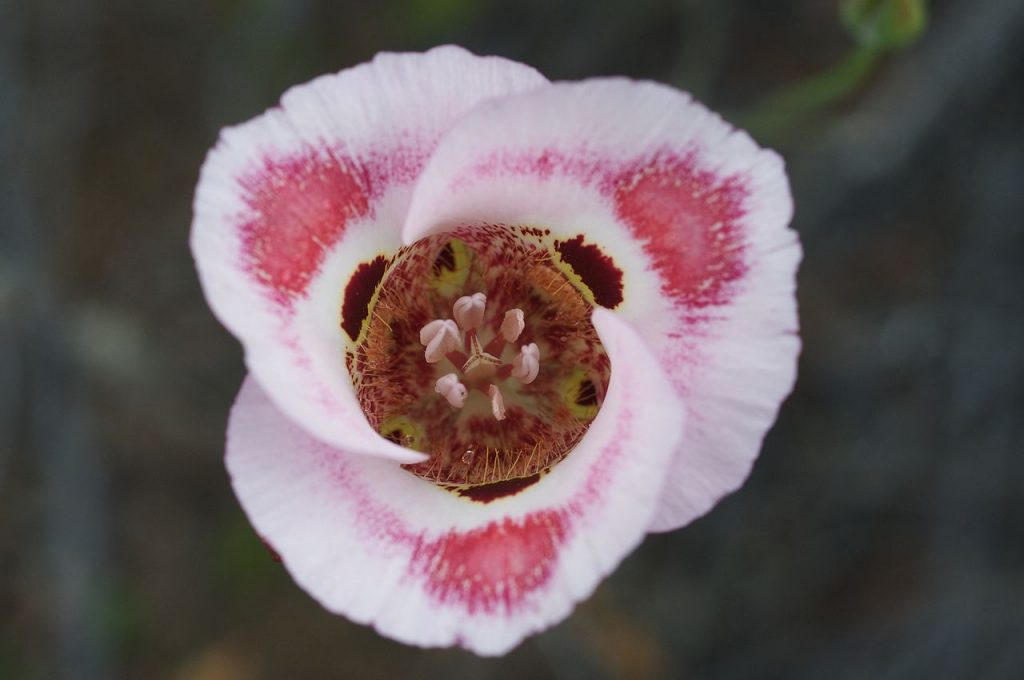
This herbaceous perennial is endemic to California where it grows in sandy soils of grasslands and open wooded areas of the mountains and foothills. It is a member of the lily family, Liliaceae, that also includes tulip and fritillary. The plant grows 4-24″ tall from a bulb and has a branched stem and grass-like basal leaves that wither before the flowers appear. In spring, umbel-like clusters of 1-6 bell-shaped flowers appear. The flowers are variable in size and consists of 3 curving sepals .8 to 1″ long and 3 oval, clawed petals up to 2″ long. The petals are usually white but may be pale pink, purple, bright red or orange, and have a large dark central blotch with a smaller paler blotch above it. The fruit is an angled capsule about 2″ long. The plants go dormant after blooming but are very attractive in the spring garden especially when massed. The genus name, Calochortus is derived from the Greek words kalos meaning beautiful, and chortos meaning grass and refers to the flowers and leaves respectively. The specific epithet, venustus, honors Venus the goddess of love, and is the Latin word meaning charming or lovely.
Type: Herbaceous perennial
Bloom: Umbel like clusters of bell-shaped white, pale pink, purple, red, or orange flowers in spring
Size: 4 – 24″ H x 6″ W
Light: Full sun
Soil: Sandy, dry to medium moist, well-drained
Hardiness: Zones 7-10
Care: Plants are dormant after blooming and need no water in the summer
Pests and Diseases: None of significance
Propagation: Seed (very slow)
Companion Plants: Ornamental grasses, cluster lilies, amole
Outstanding Selections: None
Photo Credit: Eric in SF Wikimedia Commons